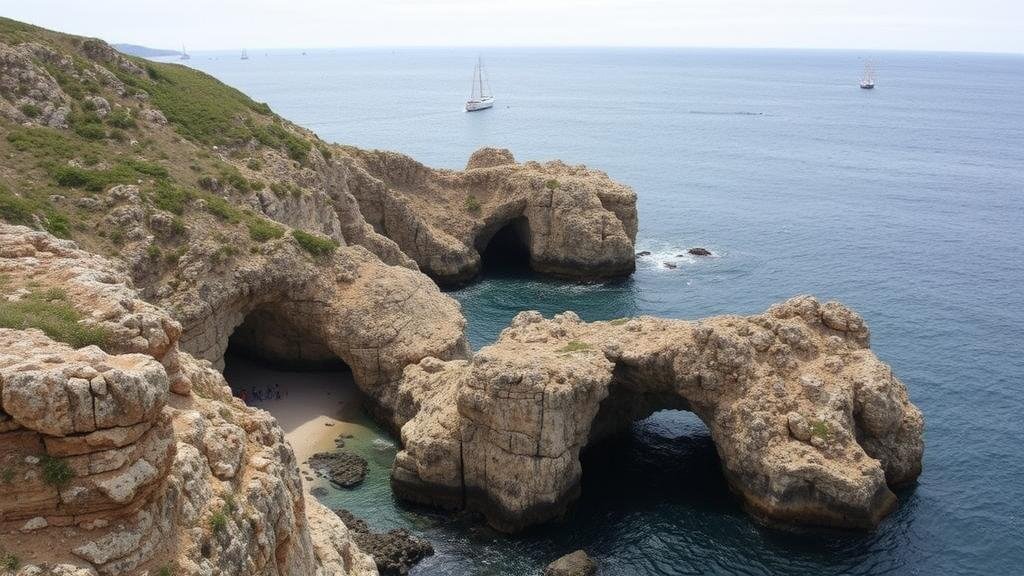Retracing pirate routes to uncover treasure-filled caves along rugged coastlines.
Retracing Pirate Routes to Uncover Treasure-Filled Caves Along Rugged Coastlines
The allure of pirate treasure is a timeless fascination, igniting the imaginations of adventurers and historians alike. Retracing the historical pirate routes often leads to discovering treasure-filled caves, especially along rugged coastlines in regions once ruled by notorious pirates. This exploration combines the thrill of adventure with historical inquiry, enhancing our understanding of maritime history and the rich tapestry of tales surrounding these infamous sea robbers.
Historical Context of Piracy
The Golden Age of Piracy, typically identified as the late 17th to early 18th centuries, saw pirates like Blackbeard and Captain Kidd wreak havoc on trade routes in the Caribbean and along the American coastlines. Key regions included the Bahamas, the Caribbean Sea, and the eastern seaboard of the United States, where the rugged coastlines provided excellent hiding spots for pirates to stash their ill-gotten gains. For example, the notorious pirate Edward Teach, better known as Blackbeard, governed the waters around the West Indies and used hidden caves like those found in the Bahamas to hide treasure.
Mapping the Routes
To uncover these treasure-filled caves, researchers and adventurers often begin with historical maps, ship logs, and journals from the time. These documents provide insights into pirate behaviors, prevalent routes, and potential treasure sites. A notable example is the use of the 1650s maps of the Caribbean, where pirate colonies such as Port Royal in Jamaica served as bustling hubs for buccaneers.
- Port Royal, Jamaica – A key base for pirates in the Caribbean.
- Nassau, Bahamas – Known for its connection to Blackbeard and other infamous pirates.
- Outer Banks, North Carolina – Sites like Ocracoke Inlet were frequented by famous pirates.
Exploration of Coastal Caves
One of the primary objectives in retracing these routes is to locate coastal caves believed to harbor treasures. These caves, often hidden from plain sight, require careful investigation. A landmark study in the late 20th century in Puerto Rico uncovered numerous caves, such as the Cueva del Indio, believed to have housed both indigenous treasures and pirate loot. Utilizing advanced scanning and exploration techniques, researchers have been able to safely examine these areas without causing disruption.
Modern Technology in Treasure Hunting
Todays treasure hunters are equipped with an array of modern technologies that streamline the search process. Methods such as Geographic Information Systems (GIS), sonar mapping, and even underwater drones have significantly enhanced exploration efficiency. For example, sonar technology was instrumental in revealing submerged sites off the coast of Florida, leading to the identification of pirate wrecks and the potential for treasure recovery.
Real-World Applications
While the quest for treasure can be highly romanticized, modern treasure hunting has practical applications. Historical societies use findings to educate the public, preserve maritime history, and foster tourism. Some regions, such as the Florida Keys, have developed treasure-related tours that not only stimulate local economies but also promote interest in pirate lore and history.
Community and Ethical Considerations
The rise of treasure hunting has raised ethical concerns, particularly regarding the protection of historic sites. Laws like the Abandoned Shipwreck Act of 1987 in the United States safeguard underwater cultural heritage. Responsible treasure hunters and historians emphasize the importance of adhering to local regulations and advocating for preservation efforts to ensure that sites of historical significance are protected for future generations.
Conclusion
Retracing the pirate routes to uncover treasure-filled caves is not only an adventure but also an important historical endeavor. The combination of modern technology, historical scholarship, and responsible exploration culminates in a unique approach to understanding the complex narrative of piracy. As treasure hunters and historians continue to collaborate in this pursuit, there remains much to learn from the past, ensuring the legacy of these sea rogues endures.
In exploring these coastal caves and retracing the steps of infamous pirates, adventurers can contribute to a broader understanding of maritime history while enjoying the thrill of discovery. search for pirate treasure is, at its heart, a journey intertwined with adventure and history.


